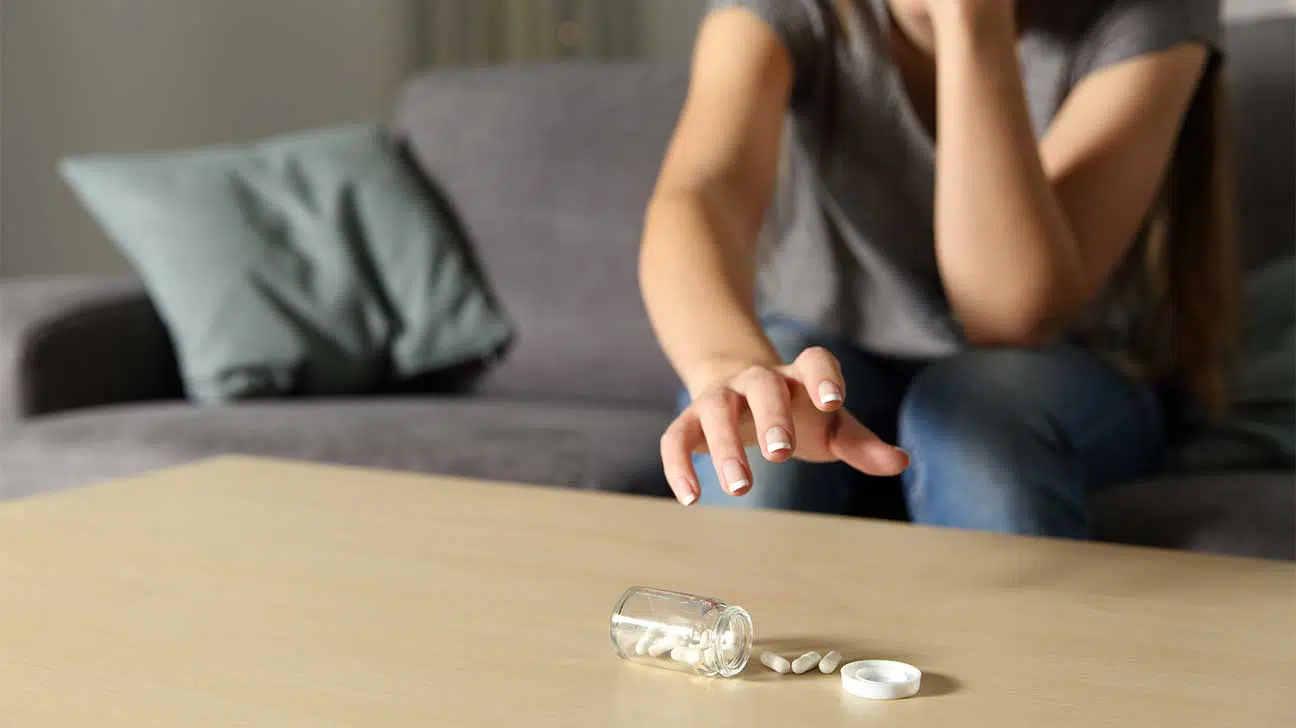
Elavil (amitriptyline) is a prescription medication primarily used to treat depression. Although safe and effective when used as directed, Elavil can have dangerous side effects if misused.
Dangers of Elavil abuse can include:
- overdose
- severe dependence
- polysubstance abuse
Taking Elavil in any way other than directed can be a sign of drug abuse and addiction. With medical and behavioral health treatment, overcoming an addiction to Elavil is possible.
What Is Elavil?
Elavil is a brand name for the drug amitriptyline. It belongs to a class of medications called tricyclic antidepressants.
Elavil is prescribed for:
- depression
- anxiety
- insomnia
- chronic pain
Elavil is a central nervous system (CNS) depressant that alters the amount of certain brain chemicals associated with mood. It can also provide pain relief and has sedative effects.
Side Effects Of Elavil
Elavil is a prescription drug that can have effects on both the brain and the body. People who take Elavil may experience certain side effects.
Side effects of Elavil can include:
- drowsiness
- dizziness
- nausea
- headaches
- dry mouth
- nightmares
- blurred vision
- weight gain
- changes in sex drive
- constipation
- difficulty urinating
If these side effects become very serious, or other serious side effects occur—such as chest pain or irregular heartbeat—contact your doctor to discuss these issues as soon as possible.
Is Elavil Addictive?
Elavil is generally believed to be non-addictive. This is when it’s taken as prescribed. Taking Elavil in ways other than prescribed may lead to a psychological reliance on Elavil.
According to some research, people who misuse Elavil generally report doing so for its mild euphoric effects, which are rare but can occur with high doses.
Signs And Symptoms Of Elavil Abuse
Misuse of Elavil is uncommon, but it can occur. People with a prior history of substance abuse may be at greater risk of misusing Elavil.
Signs of Elavil abuse might include:
- taking it in higher doses than prescribed
- taking it more often than prescribed
- taking it without a prescription
- taking it with other drugs to get high
- forging prescriptions
- going to multiple doctors to get prescriptions
- taking it for reasons other than prescribed
Elavil abuse is not harmless. Taking very high doses of Elavil or mixing it with other drugs—including alcohol—can risk overdose, severe dependence, and other negative consequences.
Dangers Of Elavil Abuse
Elavil can have dangerous side effects when misused, particularly if it’s taken in high doses or mixed with other depressants like alcohol.
In addition, Elavil use has also been associated with an increase in suicidal thoughts and behaviors in some people who take Elavil.
It’s unclear whether this risk may be greater in people who misuse Elavil. The primary danger of Elavil abuse is overdose, which can be fatal in severe cases.
Elavil Overdose: Signs And Symptoms
Overdosing on Elavil is possible, if taken in very high doses or with other depressants.
Signs of Elavil overdose may include:
- irregular heartbeat
- seizures
- confusion
- hallucinations
- agitation
- vomiting
- fever
- low body temperature
- rigid muscles
- difficulty concentrating
Drinking alcohol while taking Elavil, or mixing it with other depressant drugs, can increase the risk of overdose. Without medical treatment, overdose can be life-threatening.
Elavil Withdrawal
Taking Elavil for a long time, or misusing it, can cause physical dependence. When this develops, a person may experience withdrawal symptoms if they try to stop taking it.
Elavil withdrawal is not known to be dangerous, but it can be highly uncomfortable without professional support or a tapering plan.
Elavil withdrawal symptoms may include:
- nausea
- diarrhea
- vomiting
- headache
- fatigue
- irritability
- disrupted sleep
Withdrawal may be more severe if someone has been taking high doses of Elavil, has a prior history of substance abuse, or has been misusing Elavil for a long time.
If you or a loved one is misusing Elavil, do not try to quit it all at once. Consider talking to your doctor or seeking out a drug detox program for support.
How Common Is Elavil Abuse?
Elavil abuse is uncommon. However, it may be a higher risk in people who have a history of substance abuse or mental illness.
For instance, in a study of 346 people receiving methadone maintenance therapy, 25 percent reported taking Elavil for reported euphoric effects.
Treatment For Elavil Abuse And Addiction
Drug abuse is a serious problem that can affect all aspects of a person’s life, from their health, to their relationships, ability to work, and general well-being.
Overcoming a drug problem is possible with treatment. Treatment for Elavil abuse may involve both medical and behavioral health treatment services, such as detox and counseling.
Find Elavil Addiction Treatment Today
If you or a loved one is misusing Elavil, this may signal a need for inpatient or outpatient substance use treatment.
If you call our helpline, we can:
- identify your treatment options
- verify your insurance
- find the best treatment program for you
Call us today to learn more about Elavil addiction or to find an addiction treatment program for yourself or a loved one.
Addiction Resource aims to provide only the most current, accurate information in regards to addiction and addiction treatment, which means we only reference the most credible sources available.
These include peer-reviewed journals, government entities and academic institutions, and leaders in addiction healthcare and advocacy. Learn more about how we safeguard our content by viewing our editorial policy.
- U.S. National Library of Medicine: MedlinePlus
https://medlineplus.gov/druginfo/meds/a682388.html - U.S. National Library of Medicine
https://www.ncbi.nlm.nih.gov/books/NBK537225/ - Journal of the American Medical Association (JAMA)
https://jamanetwork.com/journals/jama/article-abstract/361259


